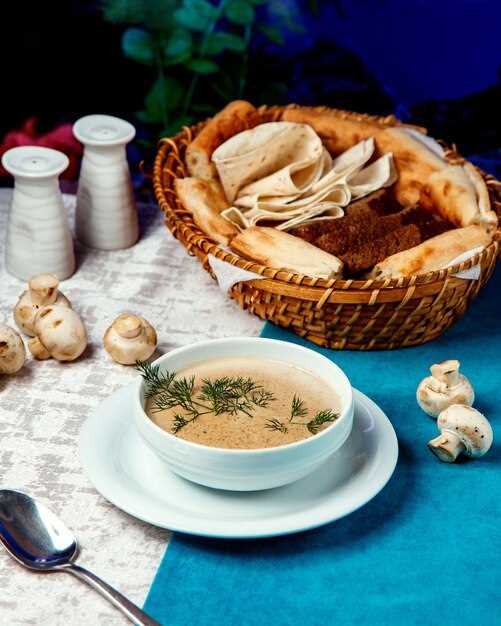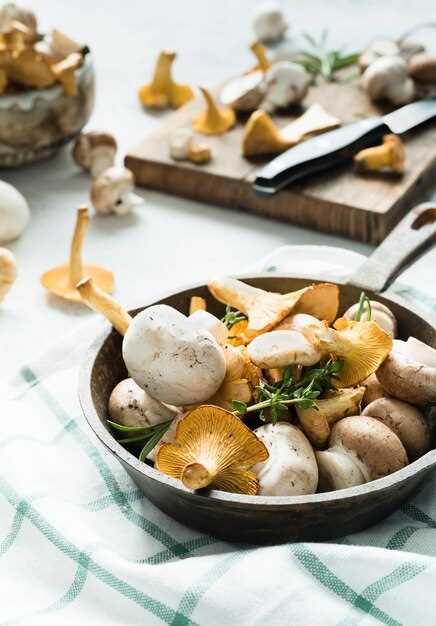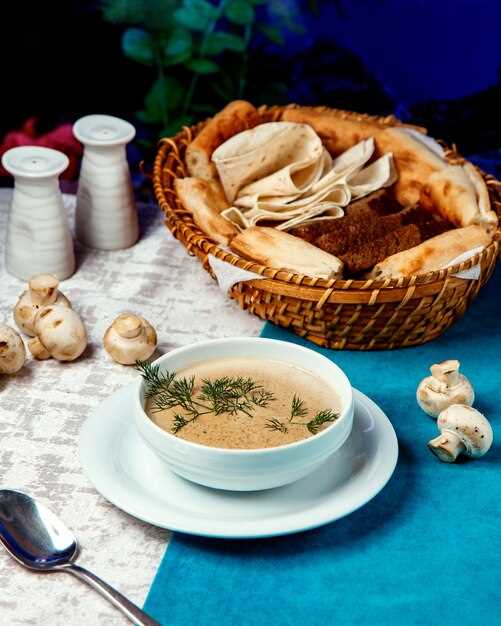Step into the delightful adventure of crafting a tasting menu with foraged wild greens and mushrooms. Begin your culinary escapade by venturing into nearby woodlands or meadows, where nature provides a diverse bounty. Before setting out, ensure you equip yourself with a reliable field guide to accurately identify edible species and avoid any harmful lookalikes.
Once your basket is brimming with freshly foraged treasures, bring your finds to the kitchen, where a world of flavors awaits. Start with the aromatic appeal of wild garlic and tender dandelion leaves, which make an exquisite base for a vibrant salad. The robust character of sautéed chanterelles or morel mushrooms introduces a depth to dishes unparalleled by cultivated varieties.
For a truly memorable dining experience, consider pairing your foraged goods with complementary accompaniments. Wild nettles can be transformed into a creamy soup with just a handful of ingredients, while fiddleheads offer a crisp contrast when lightly pickled. The earthiness of wild mushrooms perfectly matches a homemade truffle oil drizzle over freshly baked focaccia.
As you experiment with foraged ingredients, let each dish narrate the story of its wild origin. The unpredictable texture and flavors of organic, untouched produce can transform mealtime into a sensory revelation. Encourage guests to embrace the natural variations each season offers, celebrating the unique tastes that emerge.
Exploring the World of Wild Edible Plants

Identify plants in your local area with a reliable foraging guidebook. Focus on popular wild edibles such as dandelion greens, which are rich in vitamin A and have a slight bitter flavor that enhances salads. Nettles also offer a fantastic source of iron and can be blanched or added to soups.
Learn about the growing environments of various plants to ensure successful foraging. For example, ramps thrive in shady, moist areas and contribute a garlicky taste to dishes. Morels prefer wooded areas and offer a meaty flavor, essential for creating rich, earthy dishes.
Enhance your menu by combining flavors. Pair the peppery taste of watercress with the nutty notes of chickweed. Experiment with textures; the crunchy purslane complements the tender fiddleheads, providing visual and taste contrast.
Preserve your harvest for year-round enjoyment. Dry wild garlic for effective flavor-boosting in recipes. Pickle ramp bulbs to bring pungency to meals long after their growing season.
Prioritize sustainability by leaving enough for plants to regenerate and thrive. Share newfound knowledge with community members to foster responsible foraging and appreciation for nature’s bounty.
Identifying Common Wild Greens for Culinary Use
Begin with lamb’s quarters, a readily identifiable wild green with its powdery white coating on young leaves. Harvest tender leaves and stems, which offer a spinach-like flavor, making them ideal for salads, soups, or sautés.
Next, seek out dandelion greens in open fields. Look for the serrated, dark green leaves from the basal rosette, which provide a slightly bitter yet earthy taste. Mix them fresh into salads or balance their bitterness with rich ingredients in stews and casseroles.
Purslane, distinguishable by its succulent, reddish stems and small, oval leaves, stands out due to its mild lemony flavor and crisp texture. Use fresh in salads or as a garnish, or gently cook to complement other ingredients in stir-fries or soups.
Clover leaves present another common choice; they appear in three-leaf clusters. The slightly sweet leaves can be mixed into salads or used as a garnish for fresh dishes. Young clover is most tender and flavorful.
Violet leaves, with their broad, heart-shaped form, offer a mild, grassy flavor. Utilize them fresh in salads or incorporate them into sautés and soups. Their tender nature allows for versatile culinary applications.
Remember always to forage responsibly, confirming the identity of each plant thoroughly. Use foraging guides or apps if needed, and avoid areas treated with pesticides or other chemicals to ensure the safety of your culinary creations.
Safety Tips for Foraging Wild Ingredients
Always correctly identify plants and mushrooms before consuming them. Use a reliable field guide or app that features clear photos and detailed descriptions. Join local foraging groups or workshops to learn from experienced foragers who can offer insights specific to your area.
Avoid foraging in areas that might be contaminated with pesticides, heavy metals, or pollutants. Stick to wild areas away from busy roads, industrial sites, or chemically treated fields to ensure your ingredients are safe to eat.
Learn about look-alike plants that can be toxic. Some edible plants and mushrooms have poisonous counterparts that are easy to confuse. Familiarize yourself with these dangerous doppelgängers to prevent accidental poisoning.
Practice sustainable foraging by collecting only what you need and leaving the environment as you found it. Avoid over-harvesting, which can damage ecosystems and deplete resources for wildlife and future foragers.
Foragers should always wash their finds thoroughly to remove dirt, bugs, and potential contaminants. Soaking greens in salt water and scrubbing mushrooms with a brush can help ensure they are clean and safe for consumption.
Last but not least, trust your instincts. If you are unsure about a plant or mushroom’s identity, it’s safer to leave it behind. Foraging should be an enjoyable and safe activity that enhances your culinary experiences without any health risks.
Seasonal Availability of Wild Greens
Explore the best time for gathering wild greens by focusing on prime seasons. Spring offers a bounty of choices, including ramps, dandelion greens, and stinging nettles, known for their crisp textures and rich flavors. These greens thrive in cool, moist environments and are best harvested before flowering for optimal taste.
During summer, seek out purslane, lamb’s quarters, and chickweed. These heat-tolerant varieties add a succulent and mildly tangy note to dishes, flourishing in sunny, open fields and forest edges. Keep an eye out for young, tender leaves which promise the best flavor.
As autumn arrives, pivot to heartier options like sorrel and wild mustard greens. These varieties withstand cooler temperatures, growing abundantly in shaded, damp areas. Harvesting after the first frost can enhance their flavors, adding a unique sharpness to meals.
While winter may limit availability, regions with milder climates provide opportunities to find evergreen varieties such as miner’s lettuce and mallow. These greens bring a subtle, earthy taste, making them perfect for warming winter dishes.
Patience and keen observation are key to successful foraging. Always forage sustainably by harvesting small amounts, ensuring future growth for seasons to come.
Preparation Techniques for Wild Edible Plants
Always begin by thoroughly washing wild greens to remove any dirt or insects. Use a gentle stream of water and consider adding a splash of vinegar for an extra cleaning boost. After washing, pat dry with a clean cloth or allow the greens to air dry.
Trim any tough stems from mature plants and discard any discolored parts. For tender young shoots, use scissors to snip them directly above the point of new growth. This not only encourages the plant to regenerate but also ensures you are using the most flavorful and tender parts.
Blanching is a great way to soften the texture of sturdier leaves like dandelion or nettle. Bring a pot of salted water to a rapid boil, then immerse the greens for no more than two minutes. Transfer them immediately to a bowl of ice water to halt the cooking process, preserving their vibrant color and nutrients.
Sautéing provides a rich flavor profile. Heat olive oil in a pan, add minced garlic, and then the greens. Cook until just wilted to maintain their nutritional integrity. Season with sea salt and freshly ground black pepper to taste.
For a crispy texture, try roasting mushrooms and greens together. Toss with olive oil and your favorite herbs, spread on a baking sheet, and roast in a preheated oven at 400°F (about 200°C) until golden brown. This method enhances the natural umami notes.
Fermenting wild greens offers probiotic benefits while extending their shelf life. Mix chopped greens with salt and pack them tightly into a jar. Weigh down so they remain submerged in their juices, and let them sit at room temperature for about a week, tasting periodically until desired tanginess is achieved.
Crafting a Unique Foraged Menu: Ideas and Recipes

Elevate your menu with a wild nettle soup. Forage fresh nettles, ensuring you pick only the young leaves. Rinse thoroughly, then sauté onions and garlic in olive oil until soft. Add chopped nettles, a splash of water, and simmer until tender. Blend until smooth, finishing with a dollop of crème fraîche and a sprinkle of fresh herbs for a refreshing starter.
A savory wild mushroom risotto adds depth to your menu. Search for fresh chanterelles, oyster, or porcini mushrooms. Clean them carefully, then chop finely. Sauté shallots and garlic in butter, stir in Arborio rice, and gradually add vegetable stock, allowing each addition to absorb. Fold in the mushrooms, finishing with grated Parmesan and a touch of truffle oil for an earthy flavor.
Incorporate the tartness of wood sorrel in a salad for contrast. Combine diverse greens like dandelion and wild rocket. Toss with a simple dressing of lemon juice, olive oil, salt, and pepper. Top with freshly picked wood sorrel for a bright note and toasted pine nuts for texture.
Explore the potential of elderflowers in a delicate dessert. Create an elderflower panna cotta by infusing cream with freshly picked elderflowers and sugar. Allow it to cool and set before serving with a drizzle of elderflower syrup, enhancing the floral notes.
For a unique drink, craft a spruce tip cocktail. Harvest young spruce tips and muddle them gently with a bit of sugar. Add gin and tonic water, serving over ice. Garnish with a sprig of spruce for an aromatic finish that complements your foraged menu gracefully.
Pairing Wild Mushrooms with Other Ingredients
Enhance the earthy richness of wild mushrooms by generously incorporating garlic. Sauté mushrooms with crushed garlic cloves and olive oil to infuse an aromatic depth.
- Herbs: Add fresh thyme or rosemary to provide a fragrant contrast. These herbs amplify the natural umami taste of mushrooms without overwhelming them.
- Cheeses: Combine mushrooms with creamy cheeses like brie or goat cheese. The creamy texture balances the chewiness, creating a satisfying mouthfeel.
- Wine: Opt for a Pinot Noir or a Chardonnay. The subtle fruit notes in these wines accentuate the earthy taste, making it more pronounced.
- Nuts: Toasted pine nuts or walnuts offer a crunchy texture and a slightly sweet undertone, perfect as a finishing touch on mushroom dishes.
- Grains: Pair with quinoa or farro for a hearty dish. These grains absorb the mushroom’s flavors and provide a nutty base.
- Citrus: A splash of lemon juice or zest can cut through the richness, adding a refreshing brightness to the overall profile.
Introduce umami-rich soy sauce when sautéing mushrooms for an Asian-inspired twist. This addition brings out the meatiness even further, perfect for stir-fries or noodle dishes. Experiment with these combinations to discover balance and harmony in your culinary creations.
Recipe: Forest-Fresh Wild Green Salad
Gather a mix of freshly picked wild greens such as dandelion leaves, sorrel, and watercress. Ensure they are washed thoroughly to remove any dirt or insects. Pat them dry with a clean towel for a crisp salad texture.
Combine these greens in a large mixing bowl, and add a handful of chopped wild mushrooms like chanterelles or morels. Opt for mushrooms that are firm and free from blemishes for best results.
In a small bowl, whisk together freshly squeezed lemon juice, olive oil, salt, and pepper. The recommended ratio is four tablespoons of olive oil to one tablespoon of lemon juice, seasoned to taste.
Pour the dressing over the greens and mushrooms, tossing gently to ensure even coverage. This simple dressing complements the earthy flavors without overpowering them.
Consider adding a sprinkle of chopped nuts such as walnuts or pine nuts for added texture, or include some freshly grated Parmesan for a touch of richness. Both options enhance the natural flavors of the salad.
| Ingredient | Quantity |
|---|---|
| Wild Greens (Dandelion, Sorrel, Watercress) | 4 cups |
| Wild Mushrooms (Chanterelles, Morels) | 1 cup |
| Lemon Juice | 1 tbsp |
| Olive Oil | 4 tbsp |
| Salt | To taste |
| Pepper | To taste |
| Chopped Nuts or Grated Parmesan | Optional |
Serve immediately as a refreshing appetizer or a light meal. This forest-fresh salad offers a nutritious and flavorful taste of the wild.
Incorporating Foraged Foods into Modern Cuisine
Add wild greens like nettles and dandelion leaves to fresh salads for a burst of unique flavors and nutrients. These greens are rich in vitamins A and C and provide an earthy, slightly bitter taste that enhances simple dressings.
Experiment with mushrooms such as chanterelles and morels by incorporating them into risottos and pasta dishes. Their rich, umami profile adds depth, while also offering a hearty texture that complements a wide range of ingredients.
Consider pickling foraged ramps or wild garlic to preserve their seasonal flavors. Use them as tangy additions to sandwiches or as garnishes for gourmet burgers. Pickling intensifies their natural spiciness, offering a crunchy contrast.
Create broths infused with foraged ingredients like wild herbs or mushrooms. These broths serve as aromatic bases for soups and stews, imparting a nuanced layer of flavor that pairs beautifully with root vegetables and grains.
Incorporate berries such as elderberries or huckleberries into desserts or sauces for meats. Their natural tartness and vibrant colors enhance the visual appeal and taste, providing a fresh alternative to conventional fruits.
Think sustainably and harvest responsibly to ensure the continued availability of wild foods. Encourage diners to appreciate seasonal cycles and the dynamic nature of foraged ingredients by highlighting their origins and stories in menu descriptions.
Creating a Balanced Flavour Profile with Foraged Ingredients
Pair different textures and flavors to achieve culinary harmony. Think about the interplay between bitter, sour, sweet, and umami–each element has an essential role in balancing a dish. Wild greens like dandelion or chickweed offer a subtle bitterness ideal for freshening richer undertones.
- Bitter: Complement bitter greens with sweet ingredients like caramelized onions or honey-infused vinaigrette. This contrast softens intense flavors without overpowering them.
- Sweet: Leverage the natural sugars in foraged fruits such as elderberries or wild strawberries. Use these to heighten the sweetness in savory dishes, creating a memorable tasting experience.
- Sour: Introduce a sour element with sumac or sorrel. Their acidity can sharpen the taste profile, enhancing other flavors and helping cut through richer elements.
- Umami: Foraged mushrooms like chanterelles or porcini bring a profound umami depth, rounding out the dish with an earthy complexity. Sauté them with garlic to amplify their natural robustness.
Balance isn’t just about using contrasting flavors; consider texture as well. Crunchy toasted nuts or seeds can add a satisfying bite, complementing the softer elements of a dish. Garnish with freshly picked herbs like wild chervil or purslane for a pop of freshness that ties everything together.
Engage the senses by experimenting–smell and taste often as you cook. This approach helps fine-tune each component, ensuring all ingredients work synergistically. Creativity is key, so allow instinct and palate to guide the combinations, resulting in an innovative and delightful tasting menu.
Q&A:
What are some common wild greens that can be foraged for use in a tasting menu?
Common wild greens that can be used include dandelion leaves, nettles, sorrel, and wild garlic. Each of these ingredients has unique flavors that can bring depth and freshness to a dish. Dandelion leaves have a slightly bitter taste, nettles are rich in nutrients and have a spinach-like flavor when cooked, sorrel adds a tangy and citrusy note, and wild garlic offers a potent aroma and flavor.
How can one ensure the safety of foraged ingredients in a tasting menu?
The safety of foraged ingredients is ensured by proper identification and understanding of the local environment. It’s important to forage with someone experienced or refer to reliable guides. Avoid collecting plants near roads or industrial areas to prevent contamination. Thoroughly wash all ingredients to remove dirt and potential pollutants. Finally, only consume known edible species and be cautious of any allergies or adverse reactions.
What types of mushrooms are best suited for a mushroom medley, and how should they be prepared?
For a mushroom medley, varieties like chanterelles, morels, porcini, and shiitakes are prized for their distinct flavors and textures. Chanterelles have a fruity aroma, morels offer an earthy taste, porcini are meaty and nutty, while shiitakes add a rich umami flavor. Preparation typically involves gently cleaning the mushrooms to remove dirt without soaking them, then slicing or chopping as needed. They can be sautéed, roasted, or incorporated into broths for depth of flavor.
What are the benefits of including a foraged tasting menu in a dining experience?
Including a foraged tasting menu allows diners to experience seasonal and local ingredients that offer diverse and unique flavors compared to conventional produce. It enhances the dining experience with a connection to nature and showcases sustainable and responsible sourcing practices. Diners gain insight into the variety and richness of wild foods, often resulting in a richer sensory experience and a greater appreciation of natural ingredients.
Can you suggest wine pairings that complement a menu focused on wild greens and mushrooms?
Wine pairings with wild greens and mushrooms should enhance the complex and earthy flavors of the dishes. A crisp Sauvignon Blanc pairs well with the tangy and fresh notes of wild greens, while a Pinot Noir complements the earthy depth of a mushroom medley with its light tannins and notes of red fruit. For an alternative, a dry Riesling can balance the meal with its bright acidity and subtle sweetness.
How can I safely forage wild greens and mushrooms for a tasting menu at home?
Foraging wild greens and mushrooms can be an exciting culinary adventure, but it requires caution and knowledge to ensure safety. Start by thoroughly researching and identifying the specific types of wild greens and mushrooms native to your area that are safe to consume. Consider joining a local foraging group or attending a workshop to learn from experienced foragers. Always carry a reliable field guide that includes detailed images and descriptions. When you’re out foraging, avoid areas with potential contamination, such as roadsides or industrial sites, and only pick plants and mushrooms that you can positively identify as safe. Remember that some edible plants have toxic lookalikes, so if you’re unsure, it’s best not to take chances. Additionally, be aware of any local laws and regulations regarding foraging. Once you’ve foraged, ensure that you clean your finds thoroughly. Lastly, incorporate your wild finds into your menu by blending them with familiar ingredients to enhance both flavor and safety.


